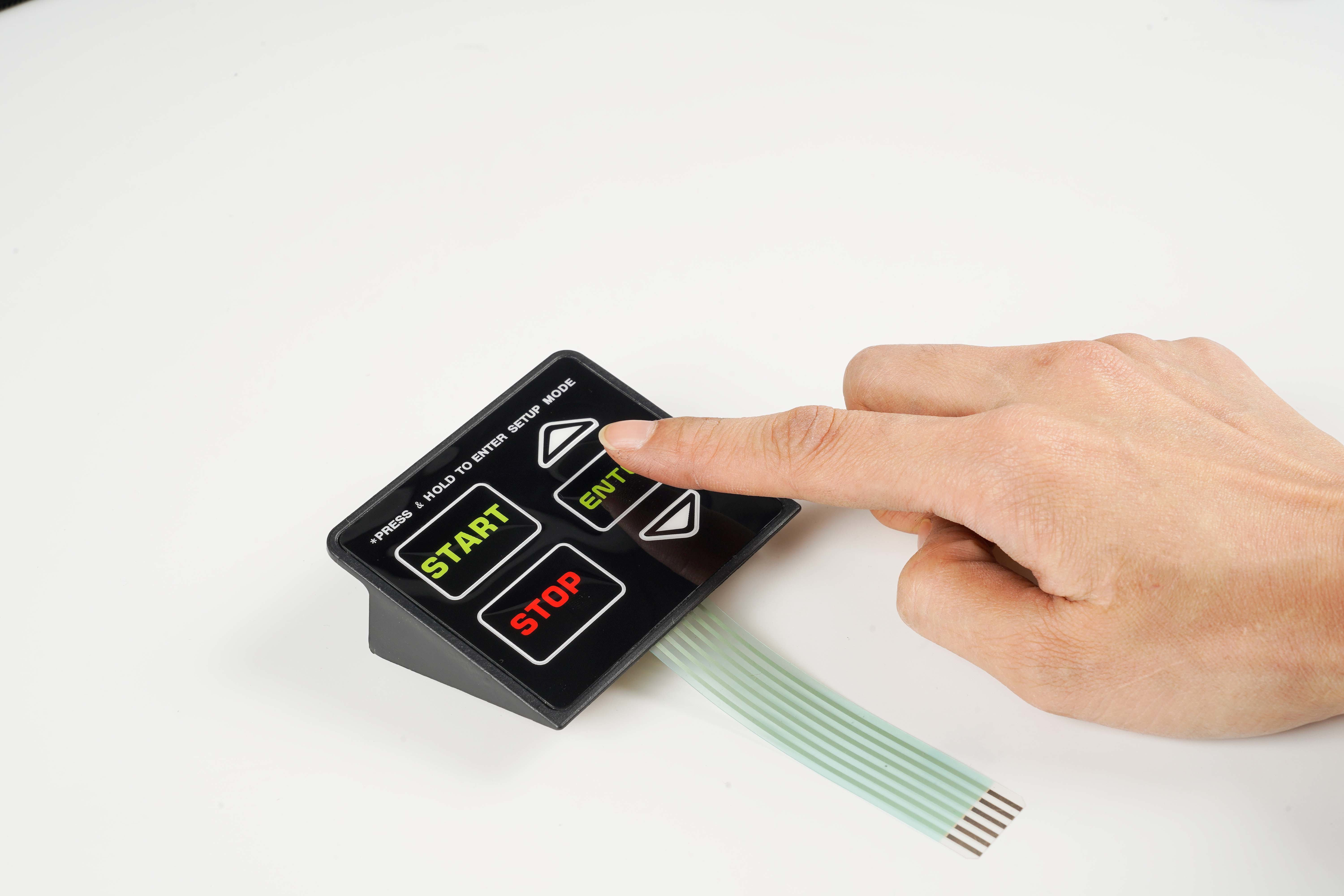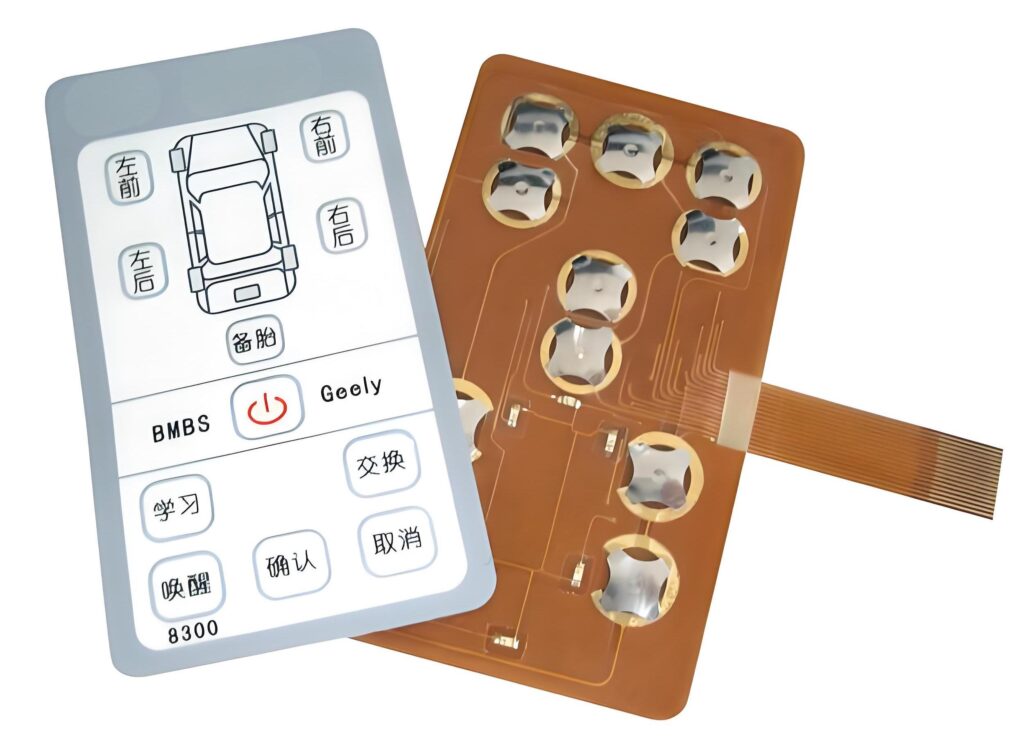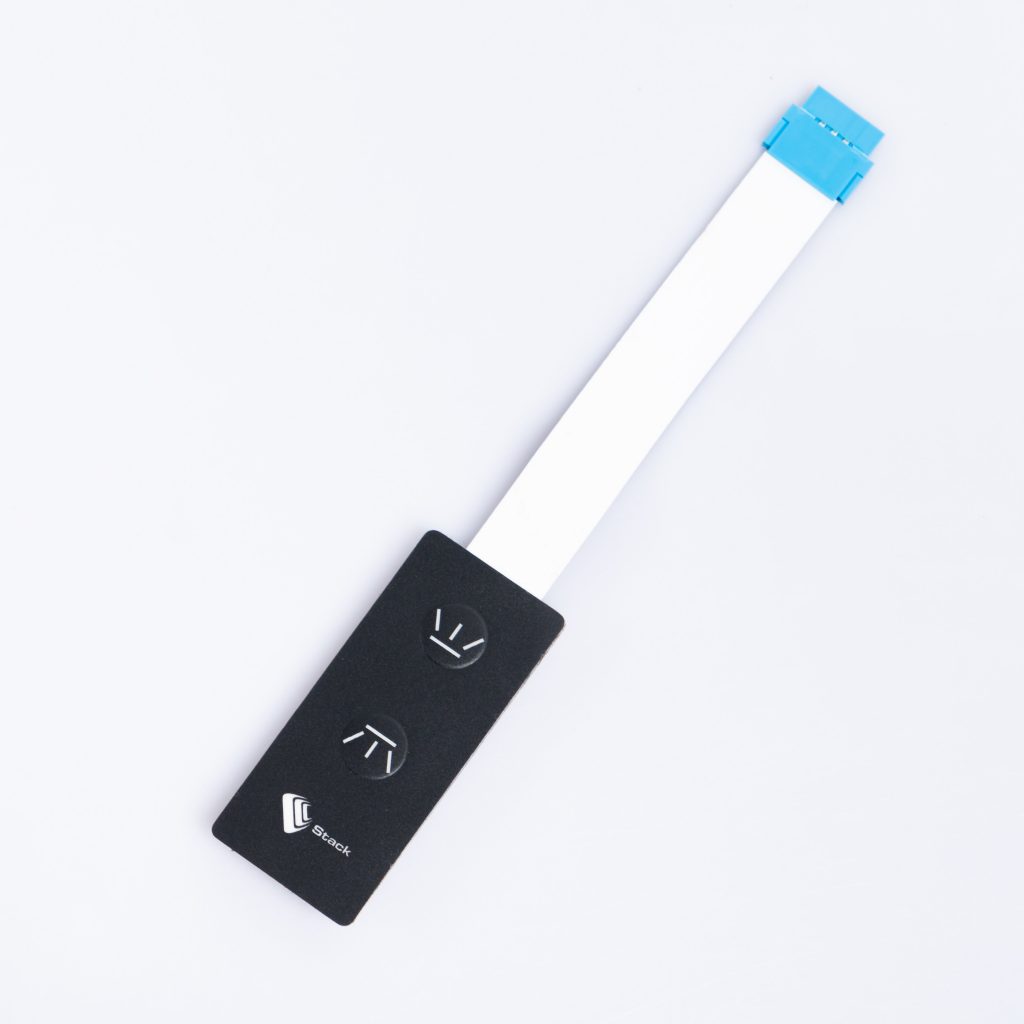5 industries benefiting from membrane switch technology
Wiki Article
The Production Process Behind Membrane Layer Change: What You Need to Know
The manufacturing procedure behind membrane changes combines cautious layout, material option, and quality control. It starts with comprehending the complexities of membrane layer switch style and proceeds via various stages, including material selections and printing techniques. Each phase plays an essential role in making certain functionality and sturdiness. Nevertheless, the intricacies of layer construction and the strenuous testing standards might expose insights that are not quickly noticeable. What lies past these fundamental components?Understanding Membrane Layer Switch Over Layout
Membrane layer buttons may show up basic at first look, their style entails detailed factors to consider that ensure performance and toughness. The style process begins with a complete understanding of user needs, consisting of the user interface's intended application and environmental variables. Comfort designs is a key aspect, as the layout must assist in ease of usage while making certain that tactile comments satisfies user expectations.Moreover, the layering of elements, such as graphic overlays, glue layers, and conductive traces, should be specifically crafted. membrane switch. This layered configuration not only affects the switch's responsiveness but additionally impacts its longevity. Interest is offered to the securing strategies utilized to secure versus dampness and dust, which might jeopardize performance. Additionally, layout considerations include aesthetics, where shade plans and visual quality boost individual experience. Inevitably, the style of membrane switches equilibriums functionality, user experience, and sturdiness, making sure that they fulfill the demands of various applications successfullyProducts Used in Membrane Switch Manufacturing
When choosing materials for membrane layer switch production, it is important to contemplate both efficiency and durability. The main materials include polyester and polycarbonate films, which offer adaptability and strength. These movies are usually covered with sticky to guarantee proper bonding to substrates. Conductive inks, commonly made up of silver or carbon, are important for creating electrical links within the button, allowing for reliable operation.Additionally, a protective layer, such as a difficult coat, is often used to boost scratch resistance and longevity. The selection of backing material, such as acrylic or foam, can considerably affect the button's tactile feeling and total user experience. Various environmental aspects, including temperature level and moisture, need to assist material choice to ensure peak performance in specific applications. Ultimately, the best combination of products adds to the membrane layer switch's performance and life-span, making informed selections necessary for manufacturers.The Printing Process: Creating Video and Text
The printing procedure in membrane layer switch production plays a significant function in generating top notch graphics and message. Various visuals layout techniques are used to guarantee aesthetic charm and performance, while mindful ink choice methods are necessary for toughness and efficiency. Recognizing these elements is fundamental for accomplishing finest lead to membrane button style.Graphic Design Techniques
Graphic layout strategies play an essential duty in the printing procedure of membrane switches, as they specify how graphics and text will inevitably appear on the last item. Efficient graphic layout involves the critical usage of colors, typefaces, and layouts to improve readability and aesthetic appeal. Developers often make use of vector graphics for scalability, making sure that images continue to be sharp at numerous dimensions. Additionally, attention to comparison and alignment is essential, as it affects customer communication and aesthetic high quality. The consolidation of branding elements, such as logos, have to be handled with care to maintain brand integrity. Generally, thoughtful visuals design methods add significantly to the capability and appearance of membrane switches, impacting individual experience and product efficiency.Ink Selection Approaches
Selecting the suitable ink is vital for accomplishing the desired aesthetic quality and toughness in membrane button manufacturing. Different ink kinds are utilized, including solvent-based, water-based, and UV-curable inks. Each type supplies distinctive features, such as flexibility, resistance, and bond to ecological aspects. Solvent-based inks are typically preferred for their longevity and dynamic shades, while water-based inks are a lot more eco-friendly but might have restrictions in adhesion. UV-curable inks supply fast treating and durable efficiency. Furthermore, color matching methods guarantee that the selected inks line up with design specifications. Ultimately, the selection of ink should consider factors such as application technique, substratum compatibility, and end-use needs to attain remarkable lead to membrane layer switch graphics and text.Layer Building And Construction and Setting Up

Material Selection Process
A cautious choice of products is vital in the manufacturing procedure of membrane buttons, as it directly affects capability and longevity. The key materials made use of consist of polyester, polycarbonate, and different conductive inks. Polyester is often preferred for its exceptional resistance to chemicals and abrasion, making it appropriate for rough environments. Polycarbonate, on the Continue other hand, supplies superior clarity and impact resistance, which is valuable for applications requiring visibility and effectiveness. Conductive inks, usually made up of silver or carbon, are important for developing dependable electric paths. Additionally, the option of adhesive materials affects the general honesty of the button - membrane switch. Evaluating aspects such as ecological direct exposure, tactile comments, and visual needs overviews manufacturers in selecting the finest products for their particular applicationsLayer Attachment Strategies
Sticking layers in membrane layer switch building and construction is a vital process that guarantees functionality and longevity. Different bond techniques are employed to safeguard suitable bonding in between layers, which commonly include making use of adhesives, heat, and pressure. Pressure-sensitive adhesives (PSAs) are typically used for their simplicity of application and immediate bonding abilities. Furthermore, thermal bonding methods can be used, where heat is made use of to activate sticky properties, safeguarding a solid bond. The choice of adhesion technique largely relies on the materials involved you can try here and the particular application demands of the membrane switch. Proper alignment and consistent application of adhesives are important to stop problems, protecting the button operates effectively throughout its intended lifespan.Quality Control Actions
Guaranteeing quality assurance throughout the layer construction and assembly of membrane switches is necessary for keeping performance and reliability. This process typically involves numerous crucial actions, consisting of comprehensive inspections at each stage of manufacturing. Producers make use of sophisticated screening methods, such as peel examinations and bond analyses, to validate the integrity of layer bonds. Additionally, visual evaluations are carried out to determine any kind of issues in printing or product inconsistencies. Environmental conditions, such as temperature and humidity, are carefully kept track of to guarantee optimal healing and attachment. Routine calibration of tools assists maintain precise manufacturing criteria. By applying these top quality control actions, suppliers can substantially lower the danger of product failing, guaranteeing that the last membrane switches fulfill the needed specs and customer expectations.Examining and High Quality Control Procedures

Advancements in Membrane Switch Modern Technology
As improvements in innovation remain to progress, membrane switches are benefiting from ingenious developments that boost their performance and user experience. One notable technology is the combination of capacitive touch technology, which enables more receptive and user-friendly customer interfaces. This shift not only enhances aesthetic appeals but likewise decreases mechanical damage, expanding the life expectancy of the switches.Additionally, advancements in visuals overlay materials have led to enhanced durability and resistance to ecological variables such as wetness and UV light. These products now supply improved quality and brightness, additional boosting the visual appeal.Furthermore, the consolidation of clever technology is transforming membrane layer switches over into interactive control board, making it possible for connectivity with IoT gadgets. This connection cultivates a seamless individual experience, leading the way for applications in numerous sectors, from healthcare to consumer electronic devices. Jointly, these innovations setting membrane layer switches over as crucial elements in contemporary tool layout.Often Asked Inquiries
For how long Does the Membrane Switch Manufacturing Process Take?
The period of the membrane layer button production procedure can differ substantially. Aspects such as intricacy, materials used, and production volume influence timelines, with common production ranging from a few days to a number of weeks for completion.What Are the Typical Applications for Membrane Layer Buttons?
Membrane layer buttons are commonly utilized in numerous industries, consisting of vehicle controls, house devices, clinical tools, and consumer electronic devices (membrane switch). Their adaptability and resilience make them optimal for applications needing easy to use interfaces and dependable performance in varied settingsCan Membrane Layer Changes Be Customized for Certain Requirements?

What Is the Lifespan of a Common Membrane Layer Switch Over?
The life-span of a typical membrane switch varies, however usually, it varies from 1 to 5 million cycles. Factors such as usage, environment, and material high quality considerably affect longevity and overall performance over time.

Are Membrane Layer Changes Ecologically Friendly?
The environmental friendliness of membrane layer switches over differs. Some materials used may not be recyclable, while others can be eco-friendly. The overall influence relies on producing methods and materials, requiring careful consideration throughout choice and disposal. The manufacturing procedure behind membrane layer switches combines careful layout, material choice, and quality control. It starts with comprehending the complexities of membrane button design and progresses via numerous stages, consisting of material choices and printing strategies. When choosing materials for membrane layer switch production, it is vital to ponder both efficiency and sturdiness. A careful choice of materials is crucial in the manufacturing procedure of membrane buttons, as it directly affects functionality and longevity. The option of adhesion technique largely depends on the products involved and the certain application requirements of the membrane layer button.Report this wiki page